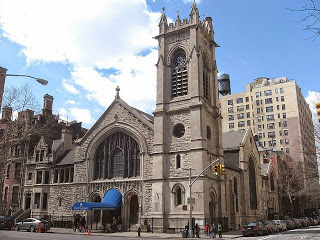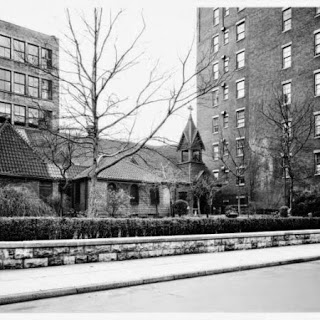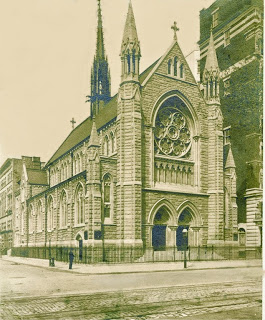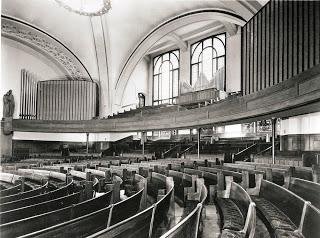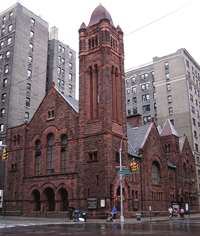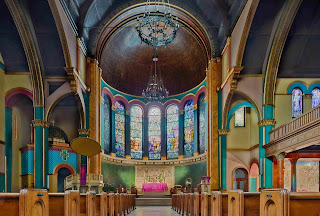LW! is a proud co-sponsor of this year’s event, organized by our colleagues at the New York Landmarks Conservancy. Congregations all over the city and state will open their doors to New Yorkers and visitors alike to explore their extraordinary art and architecture.
Among the many participating institutions are these Upper West Side landmarks:
Address: 302 West 91st Street (West End Avenue)
Architect: Heins & La Farge
Date: 1893-94
Style: Gothic Revival
It was not until 1954 that the Annunciation Greek Orthodox Church—also known by its Greek name, Evangelismos—moved into its current location, which was originally built for the Fourth Presbyterian Church. The church was designed by the firm Heins & La Farge, son of the artist and renowned stained glass window maker John La Farge. In the 1950’s the Greek Orthodox Church added certain details to the interior like the carved wooden screen and the multi-tiered crystal chandeliers imported from then Czechoslovakia. Read more here.
Address: 120 W. 69th Street (Btw. Broadway & Columbus)
Architect: William H. Day (1876), remodeled by J.D. Fouquet (1897)
Date: 1876
Acquired in 1897 by St. Stephen’s Episcopal parish and remodeled by J.D. Fouquet, the original church was designed by William H. Day for the Church of the Transfiguration, the oldest sanctuary on the Upper West Side. Eventually St. Stephen’s Church merged with Christ Church, which was the second oldest Episcopal church started in 1793. Read more here.
Address: 3 West 65th Street
Architect: Schickel & Ditmars
Date: 1902-1904
Style: Gothic
At the time the church was founded, in 1868, the congregation was one of the few exclusively English-speaking Lutheran congregations in New York City.
Read more here.
Address: 2 West 64th Street
Architect: Robert D. Kohn
Date: 1909/1910
Style: Art Noveau
The New York Society for Ethical Culture, founded in 1876 by Dr. Felix Adler, built a school (adjacent to the meeting house on CPW, designed by Carrere & Hastings) and after built the meeting house. “The exterior, influenced by the Vienna Secession, is free of any but geometric details. The only representational element is the relief by Estelle Rumbold Kohn, showing the stages of a man’s life,” David Dunlap.* Read more here.
Address: 165 West 86th St.
Architect: Original chapel built 1883-85, Leopold Eidlitz, architect; current church and chapel façade built 1889-90, Henry Kilburn, architect
Date: 1883-1885
Style: Romanesque Revival
West-Park Presbyterian Church, “one of the finest Romanesque sanctuaries in Manhattan,*” is a religious institution that can be traced to 1829. Read more here.
And these not-yet-designated landmarks:
Address: 1047 Amsterdam Avenue at 112th Street
Architect: Heins & La Farge, Ralph Adams Cram
Date: 1892- still building
Style: Romanesque Revival, Gothic/ Neo-Gothic Revival
One of the largest Cathedrals in the world, Cathedral St. John the Divine remains unfinished to this day though its construction began over 100 years ago. Read more here.
Address: 225 W. 99th Street
Architect: Robert W. Gibson
Date: 1891
Style: Romanesque
Present-day St. Michael’s Church is a descendant of a parish that formed when the Upper West Side was still the village of Bloomingdale. The first St. Michael’s was built on this site in 1806. Decorated by 22-foot apsidal windows designed by Louis Comfort Tiffany and the Tiffany Glass & Decorating Company. Read more here.
*All text adapted from: Dunlap, David. From Abyssinian to Zion: A Guide to Manhattan’s Houses of Worship. New York: Columbia University Press, 2004.

